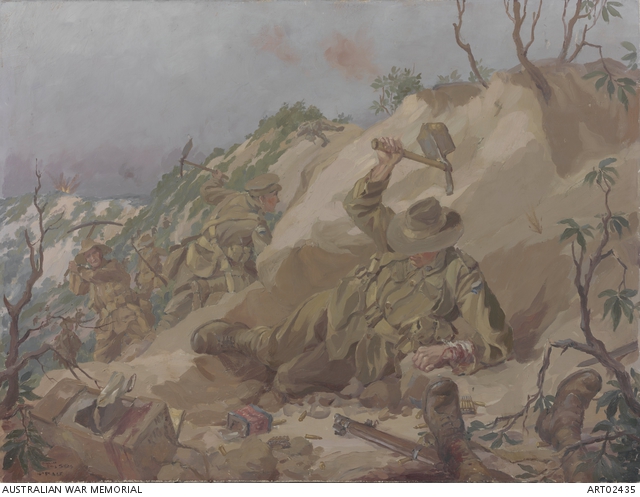Life at Anzac
“Hanging on”, living amid filth, sickness, disease, and death, while under constant threat of enemy fire, was an ordeal. Having left home seeking adventure and possible glory, troops on Gallipoli found themselves dirty, thirsty, constantly digging and tunnelling, and living in cramped dug-outs.
Sanitation quickly became a major concern. The lack of water, the lack of variety and nutrition in the food available, and the harsh climate added to the problems already presented by the proximity of dead bodies and plagues of flies. The spread of disease became alarming. For a time more than ten per cent of the force was being evacuated weekly.
Beyond the medical facilities on Anzac, Australian doctors, nurses and other staff attended to the sick, wounded, and dying on hospital ships and in hospitals on the island of Lemnos and in Egypt.
The heat early in the campaign prompted the Anzacs to modify their uniforms.
Activities for research and classroom discussion
- Look closely at the objects below, all of which were used on Gallipoli. Choose one and find out how it was used. What does this object tell you about conditions on Gallipoli?
2. Gunner Frank Lemmon sent this hardtack biscuit (below) home to Australia from Gallipoli as a postcard. What does this tell you about how palatable the biscuits were?
3. Compare and contrast the two works of art below by Ellis Silas and Frank Crozier.
i) What similarities and differences do you note?
ii) Does the painting by Crozier create a different emotional response to the one by Silas?





